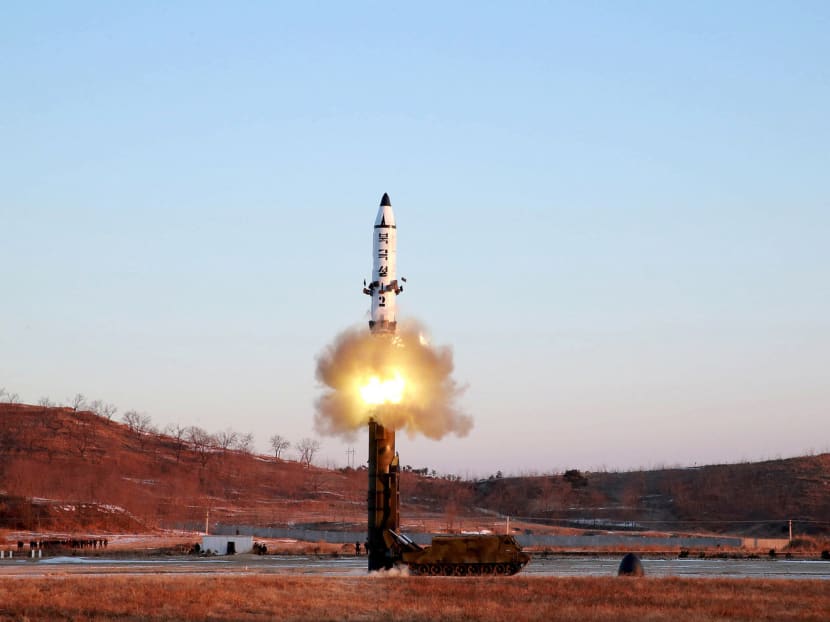UN Security Council to meet in wake of Pyongyang missile test
SEOUL — North Korea said yesterday it had successfully tested a new nuclear-capable intermediate-range ballistic missile, triggering a United States-led call for an urgent United Nations Security Council meeting after a launch seen as a challenge to President Donald Trump.

A view of the test-fire of Pukguksong-2, which was supervised by North Korean leader Kim Jong-un. Photo: Reuters
SEOUL — North Korea said yesterday it had successfully tested a new nuclear-capable intermediate-range ballistic missile, triggering a United States-led call for an urgent United Nations Security Council meeting after a launch seen as a challenge to President Donald Trump.
The new missile, which according to South Korea was propelled with a “cold-eject” system — where it is initially lifted by compressed gas before flying under the power of its rocket, a system used for submarine-launched missiles — has sparked concern about the pace of Pyongyang’s nuclearisation programme and its ability to strike enemies with long-range weaponry.
The latest missile flew east for about 500km before falling into the Sea of Japan (East Sea), South Korea’s Defence Ministry has said.
The North’s state-run KCNA news agency said its leader Mr Kim Jong-un supervised the test of the Pukguksong-2, a new type of strategic weapon capable of carrying a nuclear warhead.
Mr Kim also “expressed great satisfaction over the possession of another powerful nuclear-attack means which add to the tremendous might of the country”.
Photos released by KCNA showed the missile blasting into the sky with a smiling Mr Kim watching from the command centre, and standing on the launch field surrounded by dozens of cheering soldiers and scientists.
The UN Security Council will convene early today for consultations on the missile test following a request from the US, Japan and South Korea. Tokyo said further sanctions against North Korea could be discussed at the meeting.
China is North Korea’s main ally and trading partner but is irritated by its repeated aggressive actions, although it rejects suggestions from the US and others that it could be doing more to rein in its neighbour.
Mr Shi Yuanhua, a Korean studies professor at Shanghai’s Fudan University, said that from Pyongyang’s perspective, it was a good time to launch a missile because the new US administration had not decided what approach to take with North Korea, and Beijing was at odds with Washington and Seoul over an anti-missile system to be installed on the Korean peninsula.
North Korea has conducted five nuclear tests, including two last year, although its claims to be able to miniaturise a nuclear weapon to be mounted on a missile have never been verified independently.
Mr Kim said in his New Year speech that Pyongyang was close to test-launching an intercontinental ballistic missile (ICBM). A fully developed ICBM could threaten the continental US.
Before Sunday, the North’s two most recent missile tests were in October. Both were of intermediate-range Musudan missiles and both failed, according to US and South Korean officials.
KCNA said the latest missile was powered by a solid-fuel engine — which needs a far shorter refuelling time than conventional liquid fuel-powered missiles, according to Mr Yun Duk-Min of the Institute for Foreign Affairs and Security in Seoul.
“They leave little warning time and therefore pose a greater threat to opponents,” he said, adding that such missiles are harder to detect by satellite before launch. AGENCIES






